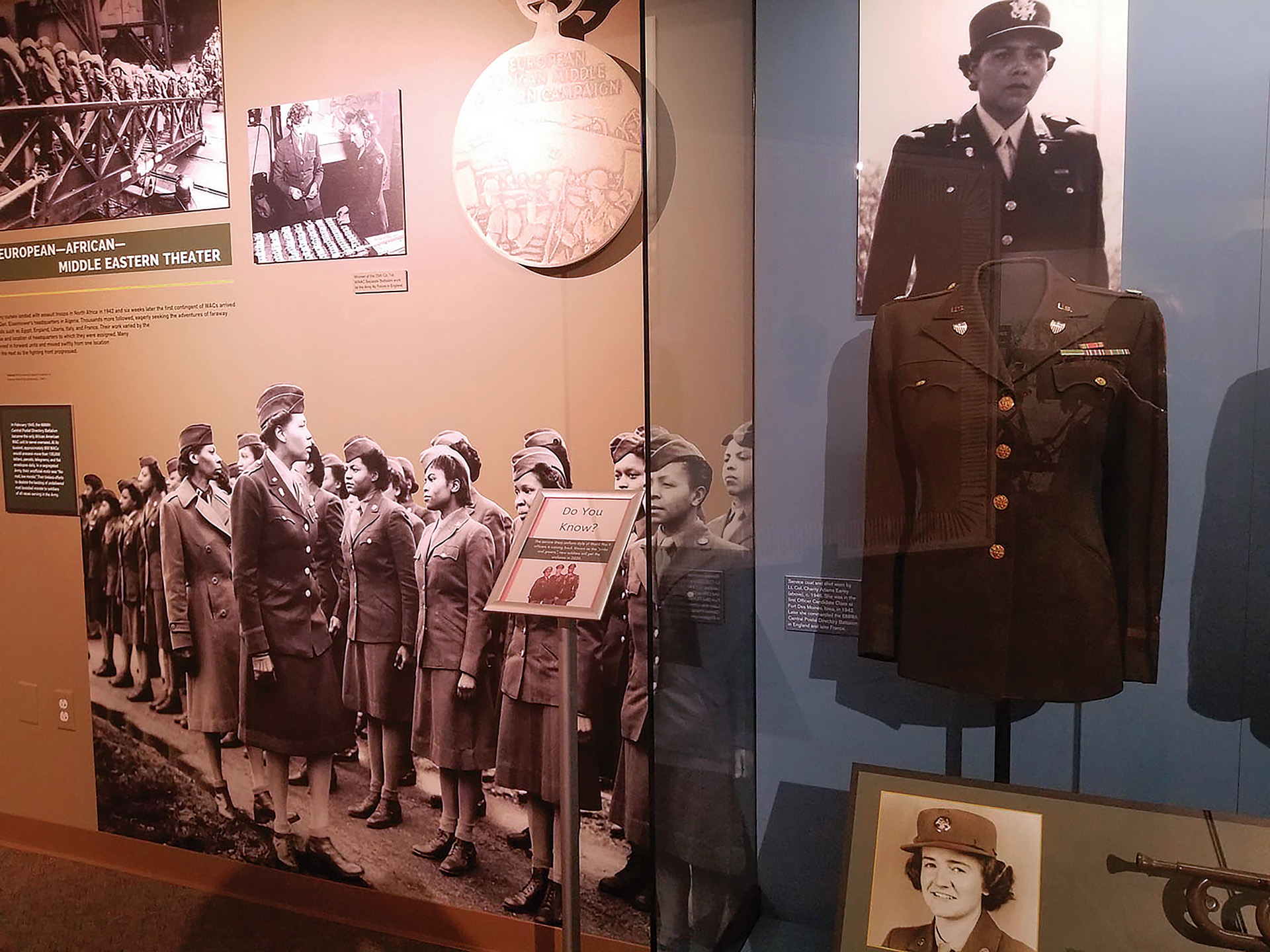Army Museums
Tradition, Innovation, and Education
By Charles R. Bowery Jr.
Article published on: June 1, 2024 in the Army History Summer 2024 issue
Read Time: < 3 mins
In 2017, the secretary of the Army centralized the funding and management of the United States Army’s museums. This included the National Army Museum and twenty-eight museum activities and support centers in three countries. Since then, the Army Museum Enterprise (AME) has been one of the world’s largest and most diverse communities of historical collections and museum activities focused on military history. Three recent AME programs, ranging from traditional to cutting-edge, demonstrate how the U.S. Army remains at the forefront of the practice of material culture education.
At Fort Gregg-Adams, Virginia, the U.S. Army Women’s Museum recently opened a new exhibition, “Courage to Deliver: The Women of the 6888th Central Postal Directory Battalion.” This exhibition uses personal objects, never before seen, to tell some of the stories of the only segregated, all-woman Army unit to serve overseas during World War II. It is at once a very traditional, artifact-based exhibition, but displays the touch and educational focus of the best public history programs. It illustrates for soldiers and public audiences that service to the nation comes in many forms, and that the U.S. Army has always fostered diversity in its ranks, and that through their service they challenged the Army to rethink its attitude toward the prevailing racial and gender stereotypes of the day. Most critically, it illustrates the “Double V” campaign that African American soldiers waged in World War II to secure their rights as citizens while defeating fascism abroad.

Fort Novosel, Alabama, the home of the U.S. Army Aviation Center of Excellence, has opened the fourth Army Training Support Facility. The William A. Howell Training Support Facility is named for the first curator of the Army Aviation Collection, who was himself an army aviator in World War II and Korea. It houses a series of collections of aircraft and systems that curators arranged for the education of aviation soldiers attending training at Fort Novosel. The facility also displays some one-of-a-kind experimental and prototype systems that have never been seen before. It will be a locus of soldier training and community engagement for years to come. The Howell facility demonstrates the Center of Military History’s commitment to using the Army’s past to train current and future generations of soldiers.
The National Museum of the U.S. Army, located adjacent to Fort Belvoir, Virginia, is home to a new cutting-edge educational experience, “D-Day: Freedom from Above,” which tells the story of the American airborne assault on Normandy in June 1944. The exhibit is based on an augmented-reality system that employs tablets to transport visitors into the fields and hedgerows of Normandy, eighty years after the events it chronicles. The exhibition also displays, for the first time in one place, the four Medals of Honor awarded to Army soldiers for their actions during the D-Day landings. In its innovative use of technology, “Freedom from Above” can engage visitors of all backgrounds and interests in the U.S. Army’s battle history.
You can learn more about these and many more museum programs at history.army.mil and www.thenmusa.org, as well as by following our museums on Facebook, X, and Instagram.